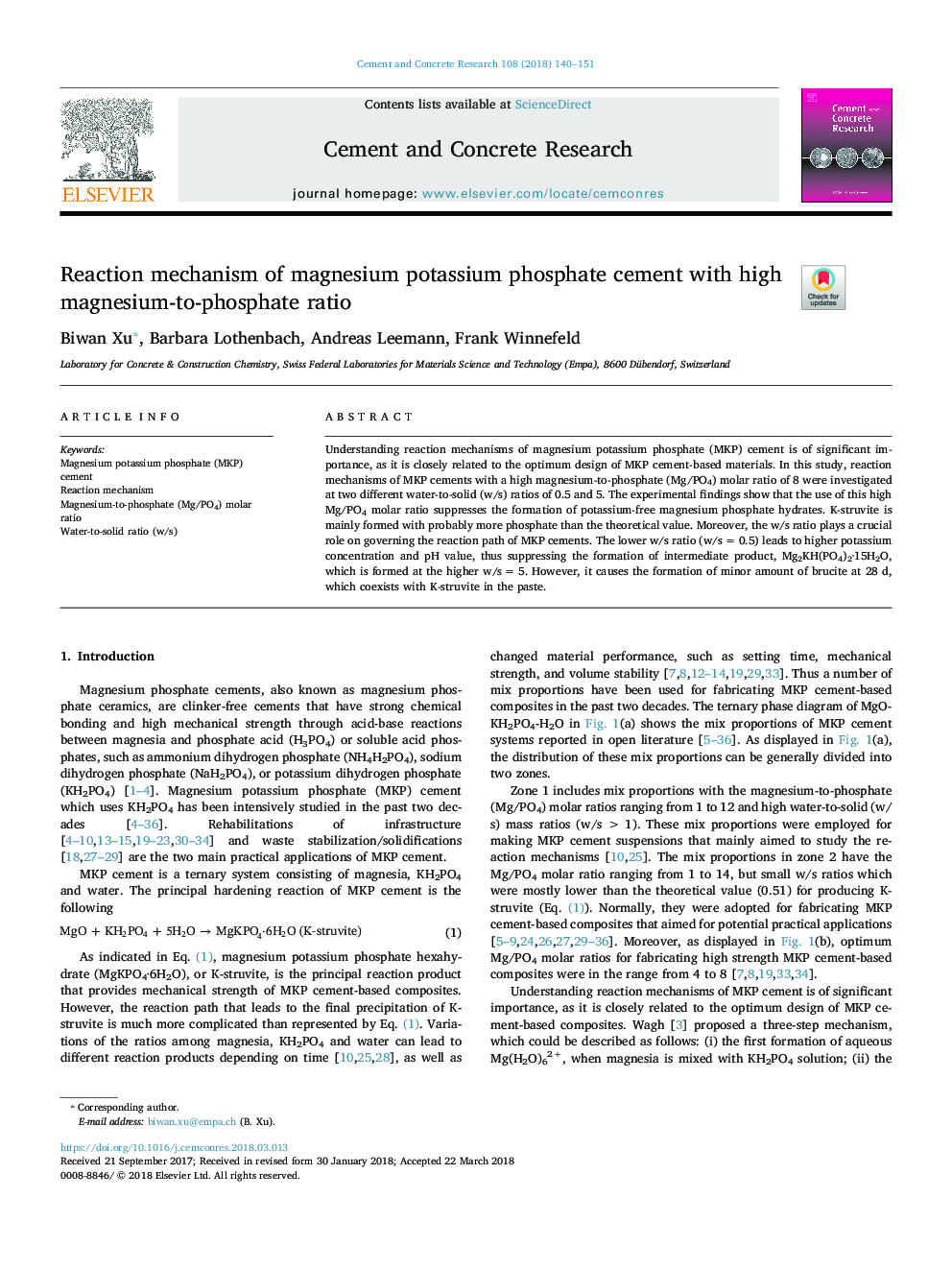| Article ID | Journal | Published Year | Pages | File Type |
|---|---|---|---|---|
| 7884696 | Cement and Concrete Research | 2018 | 12 Pages |
Abstract
Understanding reaction mechanisms of magnesium potassium phosphate (MKP) cement is of significant importance, as it is closely related to the optimum design of MKP cement-based materials. In this study, reaction mechanisms of MKP cements with a high magnesium-to-phosphate (Mg/PO4) molar ratio of 8 were investigated at two different water-to-solid (w/s) ratios of 0.5 and 5. The experimental findings show that the use of this high Mg/PO4 molar ratio suppresses the formation of potassium-free magnesium phosphate hydrates. K-struvite is mainly formed with probably more phosphate than the theoretical value. Moreover, the w/s ratio plays a crucial role on governing the reaction path of MKP cements. The lower w/s ratio (w/sâ¯=â¯0.5) leads to higher potassium concentration and pH value, thus suppressing the formation of intermediate product, Mg2KH(PO4)2·15H2O, which is formed at the higher w/sâ¯=â¯5. However, it causes the formation of minor amount of brucite at 28 d, which coexists with K-struvite in the paste.
Keywords
Related Topics
Physical Sciences and Engineering
Engineering
Industrial and Manufacturing Engineering
Authors
Biwan Xu, Barbara Lothenbach, Andreas Leemann, Frank Winnefeld,
